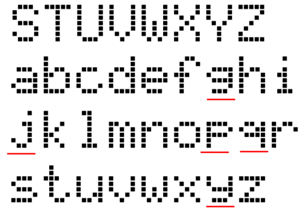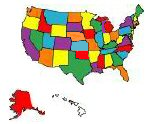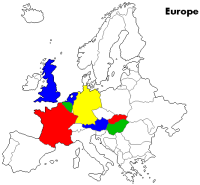WYSIWYG
Once again Jan and I sat outside this morning with our coffee, the nicest morning in a while. First off, it wasn’t raining, a big change from recent days. But even better, the temp was in the low 80’s, with low humidity, and enough breeze to keep our chimes gently, well, chiming.
Jan and I dropped off the Jeep at our mechanic’s this afternoon, but he had already left for the day, so I left a note and the key in his key drop box and I’ll call him in the morning.
Just to be sure that we wouldn’t have any trouble using the truck for a few days, I drove it into work today just to be sure. And except for a little smoke, there were no problems.
Recently I was reading an online article about different word processors and problems with them, and I thought to myself, they have no idea what word processor problems are.
In fact when started, they weren’t even called ‘word processors’, but text editors. And all you could do was just type text on the screen, pretty much like on a typewriter. And you had to hit the Enter/Return key at the end of every line.
And if you typed a paragraph of text and then discovered a typo three lines back up, you couldn’t just click on the incorrect word and correct it using your mouse. In fact there was no such thing as a mouse anyway back then.
And the only way you could back up to correct the error was to backspace back through all the text to get to it, then correct it, and then retype the text all over again. Fun!
And if you wanted to change the type in any way, you had insert the codes directly into the text. So if you wanted to print ‘this text is in bold’ in bold, you had to do it like <b>this text is in bold</b>.
The <b> turned on the bold function, and everything afterwards was in bold until you turned it off with </b>. And you did italics the same way with <I> </I>.
What’s kind of interesting is that these inline control codes carried over into a computer language called HTML which is what websites were programmed in,.
And actually printing something was just as archaic, and expensive. I bought my first printer, a Base2 dot matrix model, in 1979, and it was the first one at under $1000. It was only $995. And that was in 1979 dollars too. And that was so long ago in computer years that I haven’t been able to even find a picture of it online, just a couple of ad references.
Like most dot matrix printers of that era it used a 5 x 7 dot matrix printer head, which meant the font looked like this.
Note that the characters underlined in red have no descenders. That’s the part of a lower case letter that hangs down below the line. So because of the printhead limitations, everything had to be above the base line, so they just squished it all on top.
But I figured out a way to make the printer print the descenders using the graphic mode, and it was the very first article I ever had published in a computer magazine.
But finally the first actual word processors appeared, with a very early one being called Electric Pencil appearing in the 1976 timeframe. But EP was eclipsed in just a few years by WordStar, which put word processing on the map. And WordStar was probably the first word processor to bear the acronym WYSIWYG or What You See is What You Get .
This meant that what saw on the screen looked exactly like what would print out. Bold letter, Italics, photos, etc., it all looked exactly the same.
But WordStar in turn was left in the dust by WordPerfect which dominated the field for years. But WordPerfect never really made the transition to Windows after a severely bug-ridden version for Windows was released.
Then Microsoft Word took over the top position and holds it to this day.
Thought For The Day:
Believe me, I’m not the type of person you should ever put on speaker phone.









